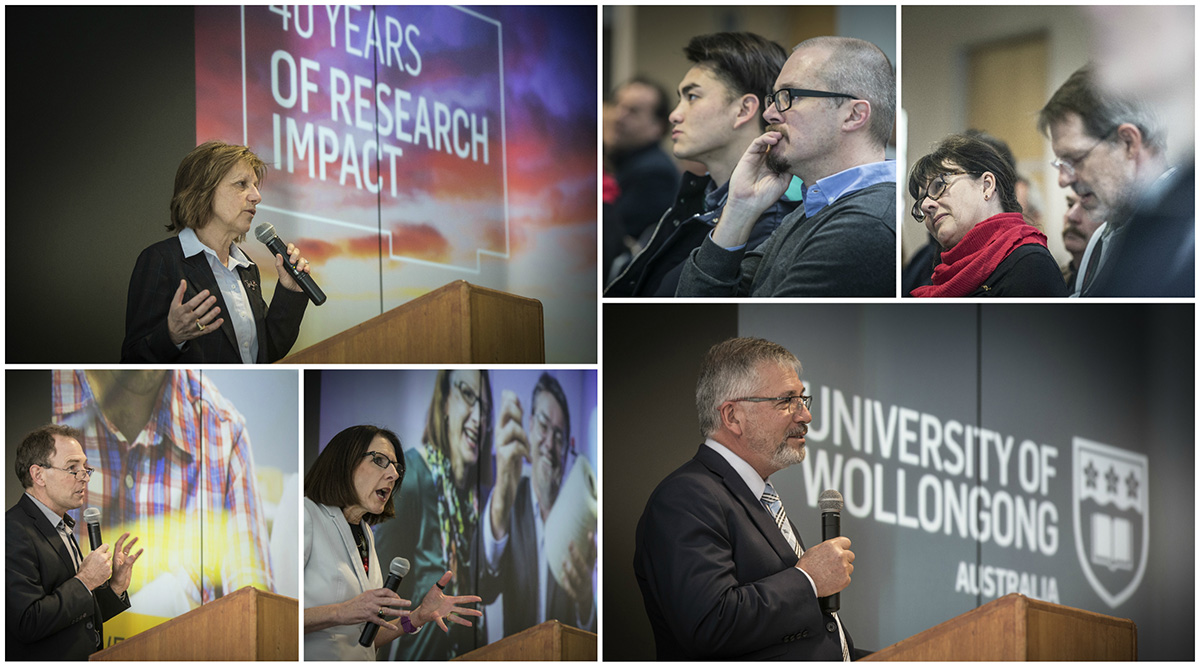August 21, 2015
Celebrating 40 years of research innovation and success
UOW research has billion-dollar impact on the economy of the Illawarra and greater region.
From the discovery of a new human species, the development of and the to exciting , UOW has come a long way in 40 years.
Originally established to train engineers, metallurgists and industrial chemists for the heavy manufacturing plants in the region, UOW has become a benchmark for Australia’s next generation of universities since it gained its independence in 1975.
Deputy Vice-Chancellor (Research and Innovation) Professor Judy Raper has launched a new publication celebrating the achievements of UOW researchers at a special event on Friday 21 August.

Professor Raper said UOW had become a hotbed for innovative research and helped transition Wollongong from a manufacturing hub into a knowledge economy, with UOW researchers receiving almost $1 billion in competitive national funding in the past 15 years.
“That’s one billion dollars making an impact on our region, our country and our world every day – from new drugs to treat antibiotic resistance, to manufacturing improvements that allow steel to be made more cheaply, to informing debates about internet censorship for children,” she said.
One success story to come out of UOW in recent years is Professor Geoff Spinks’ development of inexpensive artificial muscles for prosthetic limbs, heart assisted devices and post-cancer treatment therapies.
Materials engineer Professor Spinks (pictured above) and his team at UOW’s Intelligent Polymer Research Institute received world-wide interest when they announced in 2014 that they had used ordinary, inexpensive polymer fibres, like fishing line and sewing thread, to make artificial muscles.
“Sometimes in research the answer is right under your nose,” Professor Spinks said.
“In our case, we spent nearly two decades developing exotic materials as artificial muscles, but found that the best performing systems can be made from ordinary, everyday fishing line.”
The simplicity of the breakthrough inspired a league of artificial muscle ‘hobbyists’, with dozens of Youtube videos popping up showing everyday people making and using the muscles.
Researchers are also already finding commercial applications for the muscles in medical devices. Academics at UOW’s Biomechanics Research Laboratory are working on an innovative new device to relieve the symptoms of breast cancer-related lymphoedema.
The gives hope to the one in three breast cancer patients who develop lymphoedema, a painful and incurable condition that causes swelling of the arm due to the build-up of lymphatic fluids. It uses artificial-muscle-powered fabrics to gently massage the affected limb and help reduce swelling.
Professor Spinks said his team and collaborators around the world are always working on ways to improve the muscles.
“We still haven’t matched real muscle in areas such as speed and efficiency, so our work is not yet done.”
“With every new improvement, and with every new prototype we make, the commercial application of this technology is a step closer.”
“I genuinely believe we are on the cusp of developing a new generation of wearable medical devices to assist in the treatment of disease and injury, for rehabilitation and to assist the elderly and disabled.”



:format(jpg)/prod01/channel_3/assets/live-migration/www/images/content/groups/public/web/media/documents/mm/uow200503.jpg)